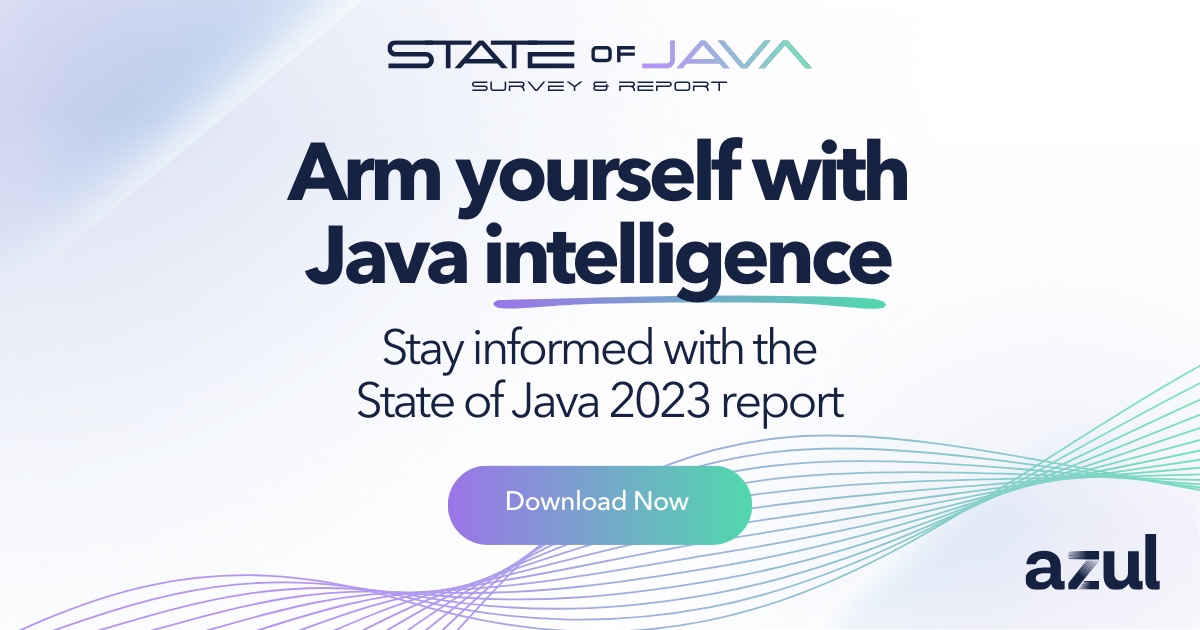
Azul State of Java Survey and Report 2023

Azul Platform Prime Delivers Superior Performance on AWS Graviton Instances

Bringing Microsecond Latency and Real-Time Transaction Processing to the Cloud


Digital experience refers to the totality of a user’s interactions as they engage with a vendor’s digitally presented customer-facing content and touchpoints. A digital experience involves many components and is not limited to the direct exchanges between a user and company content. A digital experience is intended to structure a user’s engagement with digital content to ensure they have positive and relevant experiences with every service, application, or piece of content on their journey.





Digital experience encompasses many different types of interactions a user might have over a company’s digital channels – they may be seeking information online, clicking on an advertisement, using a company’s web portal or mobile application, or conducting a commerce transaction with a chatbot. A user’s journey begins when they start executing their intentions on any digital ecosystem. A digital experience also extends beyond when a user leaves the company-owned platform in favor of third-party experiences, where the company’s ability to control the experience is diminished. A digital experience encompasses many interactions, which is why it is important for enterprises to consider all aspects of their digital presence within a customer journey.
To understand the scope of a digital experience journey, think of choosing a restaurant. You are in a new city and decide you want pizza. You look up pizza places online near you on a mobile-based map, which is the start of your digital experience. You click on the first link, which displays images and customer reviews on the home page. You click on a button that directs you to the menu. You order a cheese pizza, and the website recommends that you might also like the house salad. You order from the restaurant, and it is so good that you leave a review. These are all components of your digital experience.
First and foremost, performance is key for digital experiences. In today’s fast paced, instant-on world, a slow app is the same as a down app. Any drop in performance will risk users abandoning your website, application or other digital environment.
Beyond pure performance, a user’s digital experience is comprised of various components, and each can influence how a user perceives their overall experiences with the company. A critical component for developers to manage when developing a structured digital experience for users is the accessibility, efficiency, and adaptability of applications and services. These factors ensure that the user interacts with content that functions seamlessly and addresses their needs for a successful execution of these attributes, enterprises need to understand the customer perspective; a digital experience cannot be successfully implemented if the customer experience is misunderstood.
The accessibility of applications impacts a digital experience, as it is important for customer content to be available on demand. Think about when you’ve visited a website and received an error code. We often reload the page until we’re frustrated, eventually giving up and we maybe even move to a different website. When a service or application isn’t working properly, it creates negative attitudes towards the entire digital experience.
Particularly in the cloud, companies experience accessibility issues when their application architectures are overly complex and interdependent, which is not suited for cloud environments. To address this issue developers are restructuring their application architectures to use microservices. Microservices help maintain the accessibility of applications because they are self-contained; the benefit is made clear when errors are encountered. Traditional applications shut down entirely when an error is encountered, even if it is only located in one service. Microservice architectures can isolate the service failure, meaning the application can continue to run while the problem is being addressed.
Applications can improve their performance capabilities by properly managing data, deploying services to demand, and by utilizing operational intelligence tools, which inform performance responses with real time data. When applications can perform efficiently and right size responses, the use of unnecessary infrastructure usage is limited, and avoidable performance delays are prevented. These improvements to performance capabilities will redefine user expectations, and shift organizations away from trying to keep up with the performance expectations set by others.
Another critical component to consider in application development is adaptability. In order to successfully structure a digital experience, applications must adapt their responses to provide users with relevant and specific experiences. Users engage highly with content that directly addresses their needs and preferences. In order to understand what customers are seeking or what they may consider relevant, applications must learn patterns and anticipate behaviors. Applications must adapt in real time to meet individual specifications, which is increasingly important in crowded digital landscapes.
Improving digital experience is about locating opportunities for optimization. These optimizations can come in many forms, but it boils down to a simple formula: faster apps = better customer experience = more revenue.
Investments that enhance performance capabilities will accelerate the growth of enterprises by generating higher customer satisfaction, retention, innovation and platform engagement.
Azul Platform Prime powers hundreds of performance-driven applications across industries such as finance, ecommerce, gaming, advertising and other verticals. These applications are often Java-based and additionally utilize Java components and frameworks such as Apache Cassandra and Apache Kafka to provide greater value-added capabilities.
Azul Platform Prime delivers better overall performance with greater consistency for your revenue generating Java applications by optimizing the code itself. This optimized code not only improves application performance for topline revenue generation, but also optimizes the infrastructure costs underpinning those digital experiences creating a flywheel of efficiency and profitable growth.
A truly superior Java platform that can cut your infrastructure costs in half.